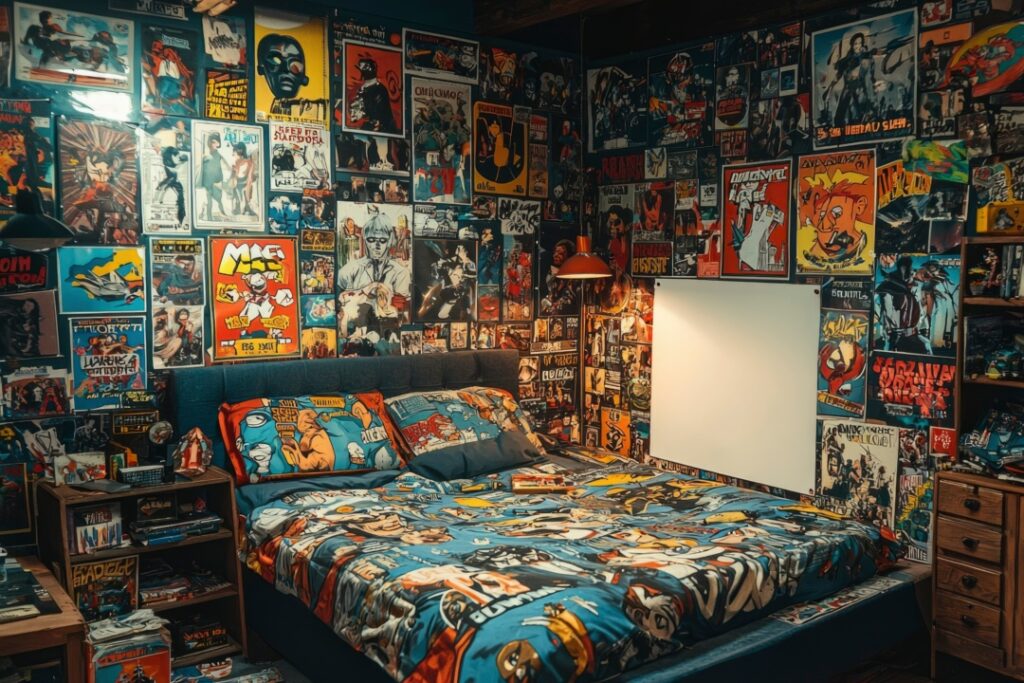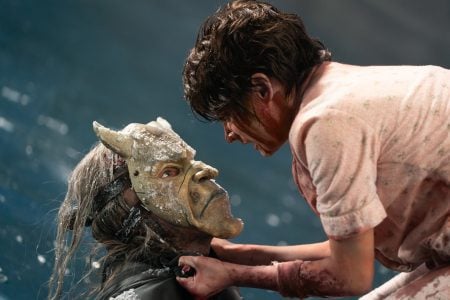Comic books are a symphony of visuals, dialogue, and imagination. But amid the capes, action lines, and thought bubbles, there’s a silent participant in every panel: furniture. Often overlooked, these inanimate objects anchor the fantastical worlds to something familiar, serving as subtle but essential storytellers. Whether it’s a rickety chair in a gritty detective’s office or a gleaming table in a futuristic lair, furniture shapes mood, era, and even the personality of characters. Let’s embark on a journey through the history of comic book furniture and discover how these understated elements evolved into indispensable tools of world-building.
1940s and 1950s: The Minimalistic Origins
In the Golden Age of comics, simplicity was king—not only in storytelling but also in set design. Post-war austerity left its mark on the pages, with furniture reflecting the utilitarian mindset of the era. Superhero hideouts featured barebones furnishings, like plain wooden desks piled with papers or sturdy chairs that could double as impromptu weapons during a scuffle.
Detective comics, influenced heavily by the aesthetics of pulp fiction, embraced a gritty realism. Picture a private investigator hunched over a desk cluttered with whiskey glasses and typewriters, illuminated by a single flickering desk lamp. These sparse settings weren’t just a product of economic constraints; they mirrored the no-nonsense, hard-boiled nature of the stories being told.
The 1960s and 1970s: Pop Art, Psychedelia, and Mid-Century Modern
As the world catapulted into the Space Age, comics shed their modesty and embraced the vibrant optimism of the era. Furniture designs, particularly mid-century modern pieces, began to populate the pages, especially in the homes of suave characters like Tony Stark. Sleek lines, low-slung sofas, and starburst clocks created an atmosphere of cutting-edge sophistication, reflecting the jet-setter lifestyle of heroes and billionaires alike.
The counterculture movement of the 1960s brought a splash of chaos to comics. Psychedelic patterns and unconventional furniture shapes started to pop up in teen-focused stories like Archie, where bean bags and funky lamps adorned the hangouts of Riverdale’s coolest kids. The furniture of this era didn’t just reflect style—it celebrated freedom, experimentation, and a break from tradition.
The 1980s: Neon, Excess, and Postmodernism
The 1980s were all about bold statements, and furniture in comics followed suit. Postmodernism’s love for excess, bright colors, and angular designs crept into villain lairs and dystopian landscapes. Think of the neon-lit rooms in Frank Miller’s The Dark Knight Returns or the geometric chaos of cyberpunk settings.
Characters like Lex Luthor epitomized the opulence of the decade, often depicted in hyper-modern offices with sleek, sharp furniture that screamed power and intimidation. Every piece of furniture was a reflection of the larger-than-life personalities dominating these stories—excessive, attention-grabbing, and unapologetically loud.
The 1990s: Grunge, Industrial Aesthetics, and Gothic Revival
As comics embraced darker, grittier narratives in the 1990s, furniture became a tool to communicate decay and rebellion. The rise of industrial aesthetics brought metal tables, exposed pipes, and repurposed machinery into urban backdrops, especially in anti-hero narratives. In Spawn, for instance, the gothic furniture—a heavy mix of ornate carvings and dark wood—added a sense of foreboding that matched the protagonist’s tortured journey.
Meanwhile, the urban decay of Gotham City was reflected in the furniture littering its alleys and hideouts. Broken chairs, weathered benches, and rusted fixtures made the city itself a living, breathing character. This era marked the shift of furniture from mere props to key components of atmosphere and storytelling.
The 2000s: Globalization, Minimalism, and Realism
As globalization took hold, comics began blending furniture styles to reflect the interconnectedness of the world. Futuristic, minimalist designs became prominent, particularly in series like Ultimate Spider-Man, where sleek, functional furniture underscored the grounded realism of the stories.
Graphic novels such as Persepolis and Blankets showcased interiors that were deeply personal yet universally relatable. Sparse furniture arrangements emphasized introspection and raw emotion, making readers feel as though they were stepping into the characters’ most private moments.
2010s to Today: Futurism, Fantasy, and Hyper-Detailing
The modern era of comics has taken furniture design to a whole new level, blending hyper-detailing with imaginative world-building. In sci-fi sagas like Saga, every chair, table, and shelf is painstakingly crafted to immerse readers in otherworldly environments. The attention to detail ensures that these fantastical settings feel tangible, almost within reach.
In Wakandan tech labs, sleek, ultra-modern designs merge tradition and futurism, symbolizing a perfect balance of heritage and innovation. And let’s not forget the retro-inspired furniture that nostalgia-heavy titles, like Stranger Things adaptations, have brought back into the spotlight. Through carefully selected pieces, these comics transport readers to a specific time and place, proving that furniture is as much a time machine as a storytelling device.
Thematic Analysis: Furniture as a Character and Story Device
Furniture in comics is more than just background noise—it’s an extension of the characters themselves. Consider a villain’s imposing throne, carved with grotesque figures, a physical manifestation of their ego and power. Or the cluttered, chaotic desk of a hero trying to balance saving the world with their day job—it’s a snapshot of their inner turmoil.
Even mundane items can speak volumes. A scuffed dining table in a working-class family’s home might set the stage for heartfelt conversations or emotional conflict. In contrast, a sleek coffee table in a chic penthouse could highlight a character’s detachment or cold ambition. The best comics use furniture to ground fantastical stories in environments that feel lived-in and authentic, creating a bridge between the fictional and the real.
A Brief Pause: What About Restaurant Furniture?
It’s not just homes and lairs that benefit from thoughtful furniture design. Comics set in diners or cafes often use restaurant furniture to evoke a sense of familiarity. Those checkered booths and worn stools can instantly transport readers to a cozy corner where characters plot their next move or share a heartfelt moment over a cup of coffee. These settings remind us of the role shared spaces play in our lives, offering a glimpse of humanity even in the most extraordinary tales.
The Future of Furniture in Comic Art
As comics venture into new realms like virtual reality and interactive storytelling, furniture will undoubtedly evolve again. Perhaps it will become dynamic, changing with the narrative, or even serve as a plot device in augmented reality experiences. Whatever the future holds, one thing is clear: furniture has cemented its place as an integral part of comic book art.
From the sparse, utilitarian designs of the 1940s to the hyper-detailed worlds of today, furniture has grown from overlooked backdrop to essential storytelling tool. So, the next time you’re immersed in a comic, take a moment to appreciate that rickety chair or futuristic console—it might just be telling you more than you realize.

Amanda Lancaster is a PR manager who works with 1resumewritingservice. She is also known as a content creator. Amanda has been providing resume writing services since 2014.






![‘Frankenstein’ Review – Guillermo del Toro’s Definitive Look At The Nature And Nurture Of Monstrosity [TIFF 2025] ‘Frankenstein’ Review – Guillermo del Toro’s Definitive Look At The Nature And Nurture Of Monstrosity [TIFF 2025]](https://cdn.geekvibesnation.com/wp-media-folder-geek-vibes-nation/wp-content/uploads/2025/10/Frankenstein-175_PF_20240430_20377_R-300x200.jpg)